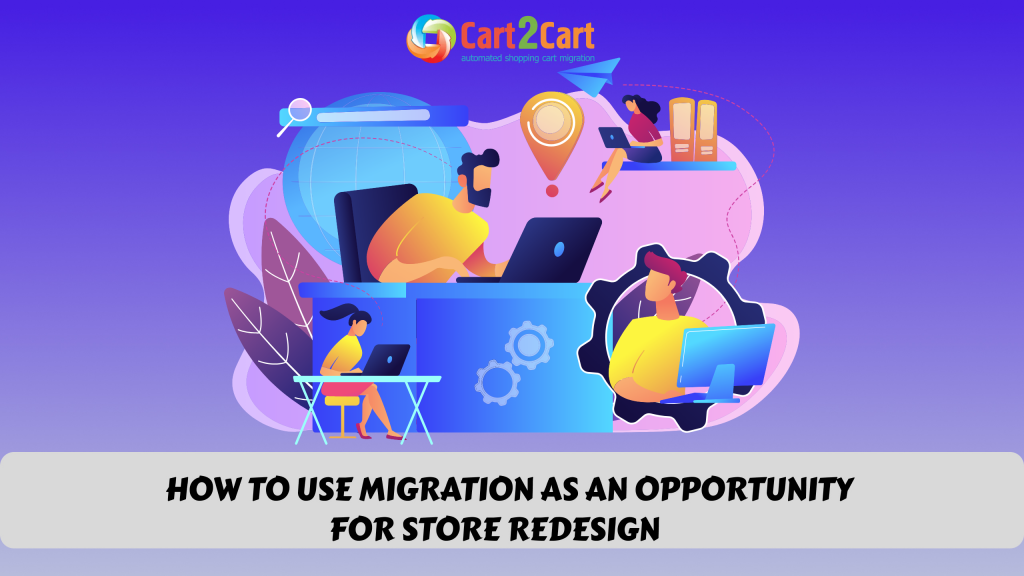When choosing a platform for building a website, understanding the strengths and weaknesses of various options is crucial. Two notable platforms are Webflow and Joomla, each catering to different needs and user preferences. This article provides an in-depth comparison of Webflow vs Joomla, offering a detailed look at their features, benefits, limitations, and practical use cases. For those considering a Joomla website, this comparison will help in evaluating its fit for your needs. Additionally, if you are looking into eCommerce Migration Service, understanding how each platform handles such migrations can be a critical factor in your decision-making process. While both Webflow and Joomla are popular, WordPress also offers robust solutions for website building, and it may be worth considering based on your specific requirements.
Introduction to Webflow and Joomla
Webflow and Joomla represent two distinct approaches to website development and management. Webflow is known for its design-centric features and all-in-one approach, while Joomla is celebrated for its flexibility and extensive customization options.
What is Webflow?
Webflow is a cloud-based web design and development platform that combines visual design tools with a content management systems (CMS) and hosting. Unlike Joomla site, which is also a content management system, Webflow allows users to create responsive websites through a drag-and-drop interface and provides hosting services to launch the websites seamlessly.
Key Features of Webflow:
- Visual Design Tool: Webflow’s drag-and-drop editor allows users to design websites visually, with real-time updates and a high level of design control.
- Responsive Design: The platform automatically adjusts designs for different screen sizes, ensuring mobile-friendliness.
- CMS Integration: Webflow includes a built-in CMS that lets users create and manage content directly within the design interface.
- Hosting: Integrated hosting with Webflow ensures fast load times, security features, and easy deployment.
Ideal Users for Webflow:
- Designers: Those who prefer a visual approach to web design.
- Small to Medium-Sized Businesses: Businesses looking for an all-in-one solution for designing, managing, and hosting their websites.
- Freelancers and Agencies: Professionals who want to deliver custom-designed websites efficiently.
What is Joomla?
Joomla is an open-source content management system (CMS) that provides a flexible framework for building websites and online applications. It is known for its extensibility through a wide range of extensions and its robust content management capabilities.
Key Features of Joomla:
- Flexible CMS: Joomla’s core CMS functionality allows for detailed content management and organization.
- Extensions and Plugins: A vast array of extensions and plugins enhances functionality and customizes features.
- User Management: Advanced user management and access control features enable detailed user roles and permissions.
- Multilingual Support: Built-in support for multiple languages facilitates the creation of multilingual websites.
Ideal Users for Joomla:
- Developers: Those comfortable with coding and looking for a highly customizable CMS.
- Large Organizations: Businesses needing advanced content management and user management features.
- Community-Driven Projects: Websites requiring robust community features and multilingual capabilities.
Detailed Comparison: Webflow vs Joomla
To help you make an informed decision, here is a comprehensive comparison of Webflow and Joomla across various aspects:
Design and Customization
| Feature | Webflow |
Joomla |
| Design Flexibility | High (Visual Designer, Custom Interactions) |
Moderate (Template-based Design) |
| Customization | High (Custom Code and Integrations) |
High (Extensions and Custom Code) |
| Design Learning Curve | Moderate (Requires Learning Webflow’s Tools) | Moderate (Requires Understanding Joomla’s Framework) |
Webflow: Webflow excels in design flexibility with its visual editor, which allows for detailed customization without needing to write code. The platform’s ability to create complex animations and interactions makes it ideal for designers who want complete control over the appearance and behavior of their websites.
Joomla: While Joomla’s design capabilities are somewhat more constrained by its template-based system, it offers significant customization through extensions and custom code. Users can modify templates and integrate custom designs, though this requires a deeper understanding of Joomla’s framework and coding knowledge.
Content Management
| Feature | Webflow | Joomla |
| Content Management |
Integrated CMS |
Advanced CMS with Extensive Features |
| Ease of Use | High (Visual Interface) | Moderate (Requires Configuration) |
| Content Organization | Simple and Integrated | Advanced (Categories, Tags, and Custom Fields) |
Webflow: Webflow provides an integrated CMS that is easy to use, especially for those already familiar with its visual design tools. Content can be managed directly within the design interface, allowing for seamless updates and content organization.
Joomla: Joomla offers a more advanced content management system with extensive options for organizing and structuring content. Users can create complex content types, categories, and tags, providing a high level of customization for content management.
SEO and Performance
| Feature | Webflow | Joomla |
| SEO Features | Built-in SEO Tools | SEO Extensions Available |
| Performance | High (Optimized Hosting) | Variable (Depends on Hosting and Extensions) |
| Page Speed | Fast (Optimized by Webflow) | Variable (Depends on Configuration) |
Webflow: Webflow includes built-in SEO features such as meta tags, alt text, and sitemaps, along with optimized hosting to ensure fast performance. The platform’s integrated hosting helps in maintaining high page speeds and security.
Joomla: SEO capabilities in Joomla are enhanced through various extensions that offer functionalities like meta tag management and SEO-friendly URLs. Performance can vary based on the chosen hosting provider and the configuration of extensions.
Pricing and Hosting
| Feature | Webflow | Joomla |
| Pricing | Subscription-Based | Free (Cost of Hosting and Extensions) |
| Hosting | Included with Webflow | Requires Separate Hosting Provider |
| Total Cost | Higher (Subscription Fees) | Lower (Open Source, Variable Hosting Costs) |
Webflow: Webflow operates on a subscription-based pricing model that includes hosting, design tools, and CMS functionality. While the subscription fees can be higher than some alternatives, it simplifies the setup and maintenance of the website.
Joomla: Joomla is free and open-source, but users must pay for hosting and may need to purchase premium extensions. The overall cost can be lower, but it requires managing hosting and other technical aspects separately.
Support and Community
| Feature | Webflow | Joomla |
| Support | Webflow Support Team | Community Support and Documentation |
| Community | Growing Community | Large and Active Community |
| Resources | Official Documentation and Tutorials | Extensive Forums, Documentation, and Guides |
Webflow: Webflow offers dedicated support through its support team and a growing community of users. Official documentation and tutorials are available to help users navigate the platform and resolve issues.
Joomla: Joomla benefits from a large and active community that provides extensive support through forums, documentation, and guides. While official support is less centralized, the community-driven resources are comprehensive and valuable.
Choosing Between Webflow and Joomla?
Migrate your store smoothly with Cart2Cart! Transfer your data, products, and orders securely from Webflow to Joomla or vice versa—no hassle, no downtime. Start your seamless migration today!
TRY IT FREE
Use Cases and Scenarios
Webflow is ideal for designers looking to build custom websites with a strong emphasis on design flexibility and interactive elements. It's perfect for creative professionals who want a visual, no-code solution to quickly bring their ideas to life. In contrast, Joomla is better suited for users who need a more robust content management system (CMS) with the capability to handle complex websites. It is often used for large-scale projects such as e-commerce sites, community platforms, and multilingual websites, where content structure and scalability are key priorities.
When to Choose Webflow
- Design-Centric Projects: Webflow is ideal for projects where design flexibility and visual control are paramount. If you need to create custom designs and interactions without diving into code, Webflow’s visual editor is a strong choice.
- All-in-One Solution: For users who prefer an all-in-one platform that includes hosting, design tools, and CMS functionality, Webflow provides a seamless experience.
- Small to Medium Businesses: Businesses looking for a quick and efficient way to launch a professional website may benefit from Webflow’s integrated approach.
When to Choose Joomla
- Complex Content Management Needs: Joomla is well-suited for websites that require advanced content management features, such as detailed content organization and user management.
- Customization through Extensions: If you need extensive functionality through plugins and custom code, Joomla’s flexibility with extensions and modules offers a high level of customization.
- Large Organizations and Community Sites: Joomla is a good fit for large organizations and community-driven websites that require robust user management and multilingual support.
Additional Considerations
When choosing between Webflow and Joomla, it’s important to consider the long-term needs of the website. Webflow offers hosting as part of its service, which can be a convenience for users who prefer an all-in-one solution. However, Joomla provides more flexibility in hosting, allowing users to choose their own server environment. Additionally, Joomla’s extensive community support and plugins make it a great choice for users who need more customization options, while Webflow’s streamlined workflow appeals to those seeking simplicity and quick deployment without extensive technical knowledge.
Learning Curve and Skill Requirements
Webflow: While Webflow offers a user-friendly interface for designers, mastering its full range of features may require some learning. Users should be comfortable with design principles and willing to explore Webflow’s tools to leverage its capabilities fully.
Joomla: Joomla’s learning curve can be steeper, particularly for those new to CMS platforms. Understanding Joomla’s framework, managing extensions, and configuring settings requires a certain level of technical knowledge and experience.
Future Growth and Scalability
Webflow: Webflow’s integrated approach is well-suited for smaller to medium-sized projects, but scaling may involve additional considerations. Users planning for significant growth should assess Webflow’s capabilities and how it aligns with their future needs, especially when leveraging Webflow's visual design tools.
Joomla: Joomla offers a high degree of scalability due to its flexible architecture and extensive extensions. As websites grow and evolve, Joomla’s modular nature allows for the addition of new features and functionality.
FAQ
What is the main difference between Webflow and Joomla?
Webflow is a visual design and hosting platform that integrates design, content management, and hosting into one solution, ideal for design-focused users. By using Webflow, you can efficiently create diverse websites with a streamlined approach. On the other hand, Joomla is a traditional CMS that offers extensive content management and customization options but requires separate hosting and more technical knowledge. When considering Webflow Joomla, it’s important to evaluate your specific needs for creating diverse websites and the level of technical expertise you have. Additionally, while Webflow offers intuitive design options, Joomla provides greater flexibility in customization and the use of third-party plugins like WordPress for more advanced features.
Is Webflow suitable for beginners?
Webflow is accessible for users with a design background but may present a learning curve for complete beginners. Its drag-and-drop interface simplifies design tasks and website building, making it easier to create a stylish website. However, mastering advanced features, such as how to create CMS collections, integrations, and backups, may take time. For those seeking a simpler option, WordPress may be more suitable for beginners due to its vast resources and intuitive interface.
Can Joomla be used for e-commerce?
Yes, Joomla supports e-commerce through various extensions like VirtueMart and HikaShop. These extensions enable users to create and manage online stores with a range of features, including product management, payment gateways, and customer management. Additionally, the user interface provided by these extensions is user-friendly, and while Joomla offers extensive functionality, platforms like Webflow CMS Collections also provide robust e-commerce solutions. When it comes to online store management, having the right keyword strategy and backup plan is crucial for success.
How does the cost of Webflow compare to Joomla?
Webflow operates on a subscription-based pricing model that includes hosting, which can be higher compared to Joomla’s free open-source software. Joomla itself is free, but users must pay for hosting and any premium extensions they choose to use. Additionally, Webflow’s integrated hosting can offer advantages in terms of optimizing your website's search engine rankings, while Joomla requires separate hosting solutions that may affect the overall SEO performance. Webflow’s style options and integrated features can often justify its higher costs for users looking for an all-in-one solution.
What kind of support is available for Webflow and Joomla?
Webflow offers support through its dedicated team and a growing community, with official documentation and tutorials available, which can help improve your search engine rankings. Joomla benefits from a large and active community, providing extensive support through forums, documentation, and user guides, also contributing to better search engine rankings. Joomla users may also benefit from backup tools and keyword-focused content strategies that help optimize their site for search engines.




 March 31, 2025
March 31, 2025 


